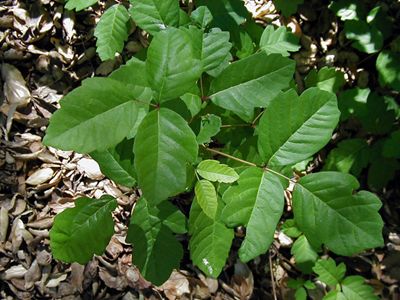Palmdale Hills Trail
Poison Oak (Toxicodendron diverisloba)

Poison oak is an adaptable shrub or vine that grows in many habitats. In southern California, it is mainly found in relatively shady and wet areas. Poison oak cover can be thick in riparian areas and along stream banks. Like other members of the Toxicodendron genus, it can cause itching and allergic rashes in people after contact by touch or smoke inhalation.
Poison oak can be identified by groups of 3 leaves growing from single stems off non-thorny, woody shrubs or climbing vines: “Leaves of Three, Leave it Be!”. Poison oak has waxy or shiny green leaves in spring and early summer. It turns red in late summer and autumn before its leaves fall leaving behind bare branches during winter.
Tips for prevention:
- Learn what poison oak looks like in all seasons so you can avoid it.
- It’s best avoided by staying on the trail and wearing long pants and long sleeved shirts to prevent contact with skin.
- If you think you have come in contact with poison oak, immediately wash the area with soap and cold water.
- Wash your pet if it may have brushed up against poison oak. Use pet shampoo while wearing rubber gloves. Most pets are not sensitive to poison oak, but the oil can stick to their fur and cause a reaction in someone who pets them.
